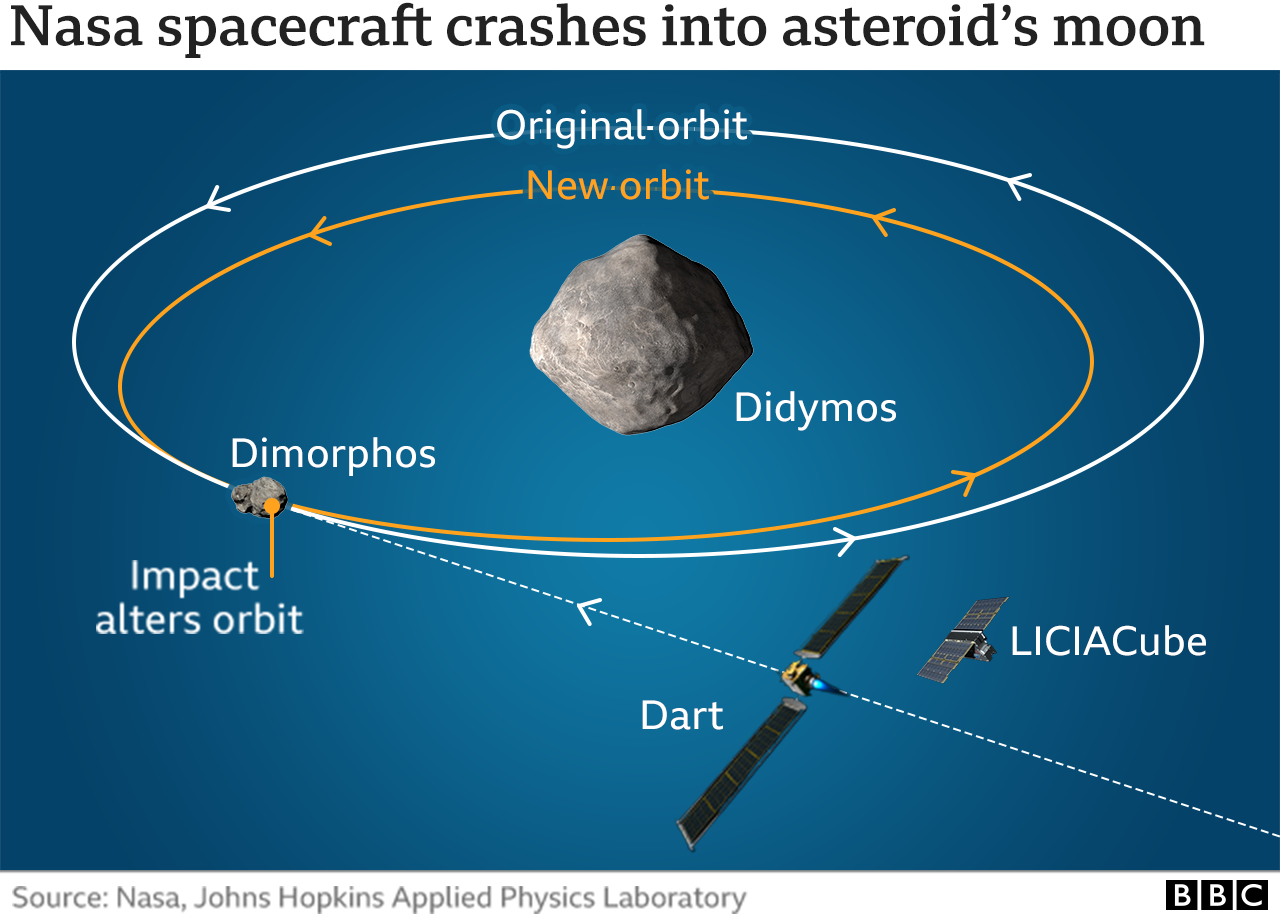A telescope in Chile captures an image of a comet-like plume of debris behind the giant rock.
 Image source, CTIO/NOIRLab/SOAR/NSF/AURA/T Kareta, M Knight
Image source, CTIO/NOIRLab/SOAR/NSF/AURA/T Kareta, M KnightA new image shows that an asteroid which was deliberately struck by Nasa’s Dart probe has left a trail of debris stretching thousands of kilometres.
A telescope in Chile captured the remarkable picture of a comet-like plume spreading behind the giant rock.
The probe was crashed last week to test whether asteroids that might threaten Earth can be nudged out of the way.
Scientists are still working to establish whether test was a success, and the asteroid’s trajectory altered.
The extraordinary image was taken two days after the collision by astronomers in Chile, who were able to capture the vast trail using the Southern Astrophysical Research Telescope (Soar).
It stretches for more than 10,000km (6,200 miles), and is expected to get even longer until it disperses completely, and looks like other space dust floating around.
“It is amazing how clearly we were able to capture the structure and extent of the aftermath in the days following the impact,” said Teddy Kareta, an astronomer involved in the observation.
The trail of debris would be monitored over the coming weeks and months, Michael Knight of the US Naval Research Laboratory said.


The $325m (£240m) Dart mission saw the probe deliberately smashed into the asteroid, destroying the spacecraft in the process. It will be some weeks before scientists know for sure whether their experiment has worked.
However, Dr Lori Glaze, the director of planetary science at Nasa, was convinced something remarkable had been achieved by the mission.
“We’re embarking on a new era of humankind, an era in which we potentially have the capability to protect ourselves from something like a dangerous hazardous asteroid impact. What an amazing thing; we’ve never had that capability before,” she told reporters.
Scientists will determine whether the mission has been successful by studying the changes to the orbit of Dimorphos around another asteroid called Didymos.
Telescopes on Earth will make precise measurements of the two-rock, or binary, system.
Dart is an acronym for Double Asteroid Redirection Test.
It was designed to do “exactly what is says on the tin”, mission lead Dr Andy Rivkin told BBC News.
The technique could be used if there was an asteroid heading for Earth at some point in the future, he said, describing it as a “very simple idea” – ramming the spacecraft into the object you are worried about, and using the mass and speed of the craft “to slightly change the orbit of that object enough so that it would miss the Earth”.